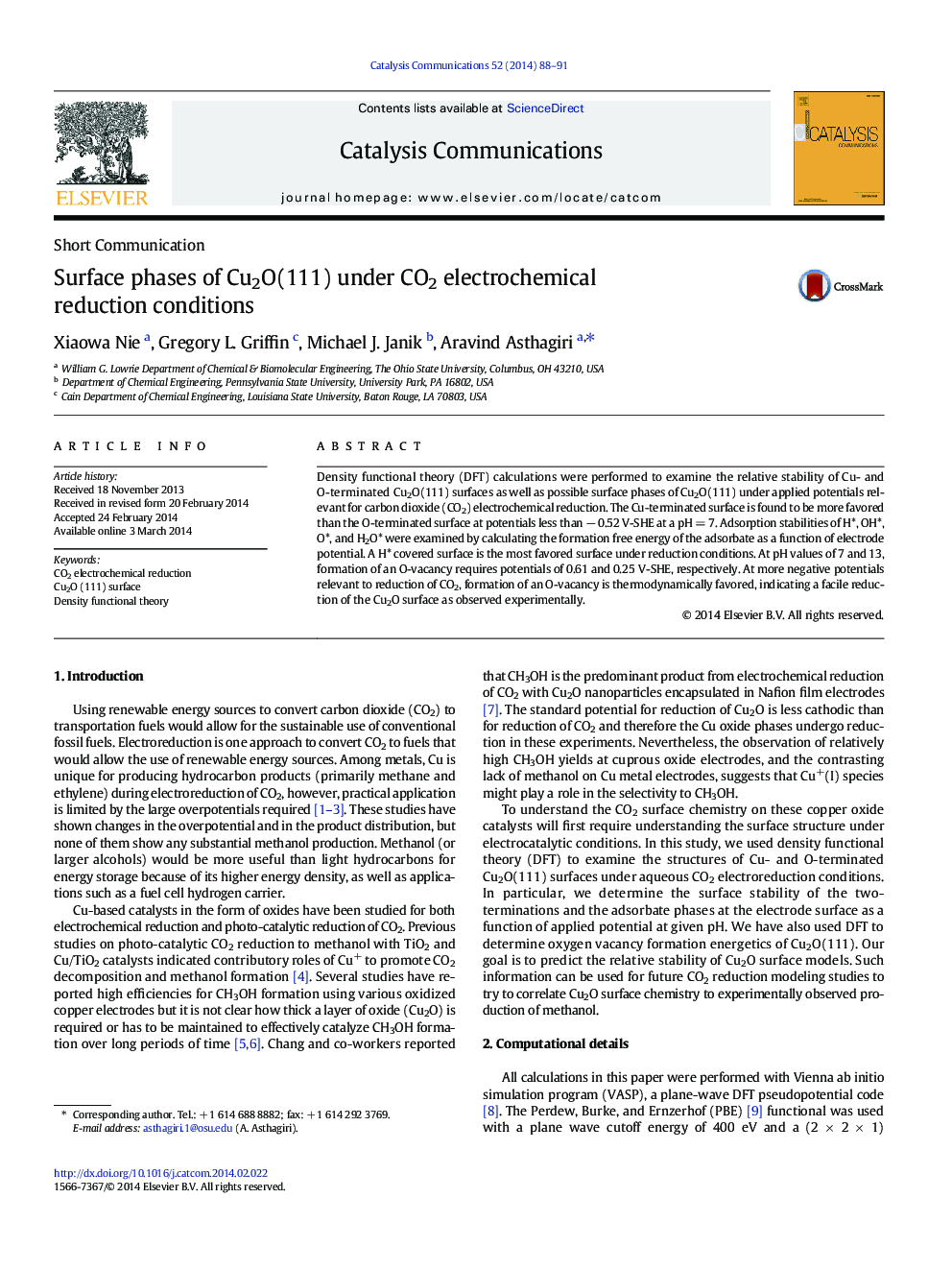| Article ID | Journal | Published Year | Pages | File Type |
|---|---|---|---|---|
| 49663 | Catalysis Communications | 2014 | 4 Pages |
•Structures of the Cu- and O-terminated Cu2O(111) surfaces were studied by DFT.•Cu-terminated surface is more favored under CO2 electroreduction conditions.•H*, OH*, O*, and H2O* adsorption stabilities were examined.•H* covered surface is more favored under the reduction conditions.•Formation of oxygen vacancy is thermodynamically feasible.
Density functional theory (DFT) calculations were performed to examine the relative stability of Cu- and O-terminated Cu2O(111) surfaces as well as possible surface phases of Cu2O(111) under applied potentials relevant for carbon dioxide (CO2) electrochemical reduction. The Cu-terminated surface is found to be more favored than the O-terminated surface at potentials less than − 0.52 V-SHE at a pH = 7. Adsorption stabilities of H*, OH*, O*, and H2O* were examined by calculating the formation free energy of the adsorbate as a function of electrode potential. A H* covered surface is the most favored surface under reduction conditions. At pH values of 7 and 13, formation of an O-vacancy requires potentials of 0.61 and 0.25 V-SHE, respectively. At more negative potentials relevant to reduction of CO2, formation of an O-vacancy is thermodynamically favored, indicating a facile reduction of the Cu2O surface as observed experimentally.
Graphical abstractFigure optionsDownload full-size imageDownload as PowerPoint slide
